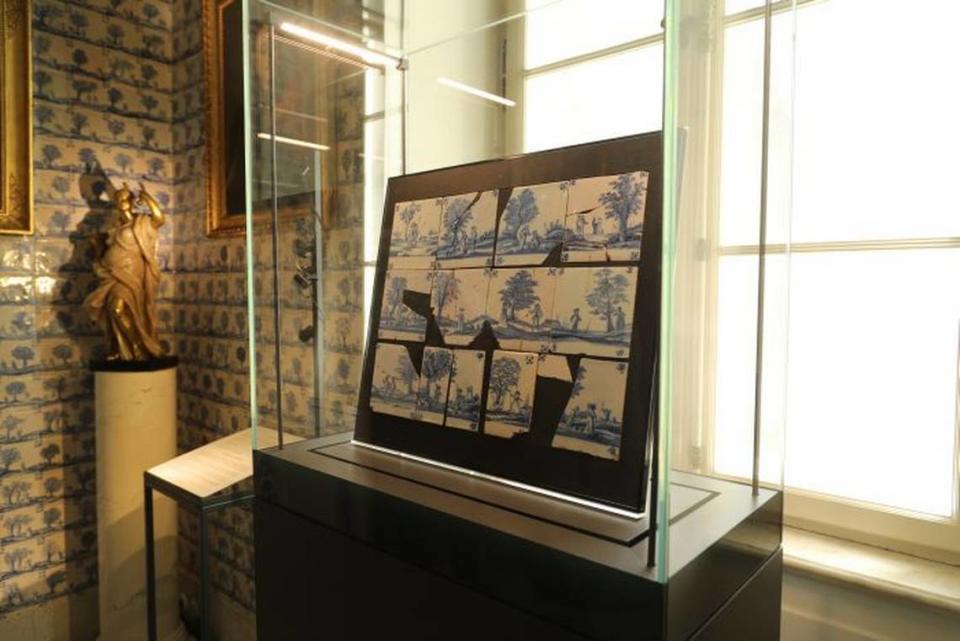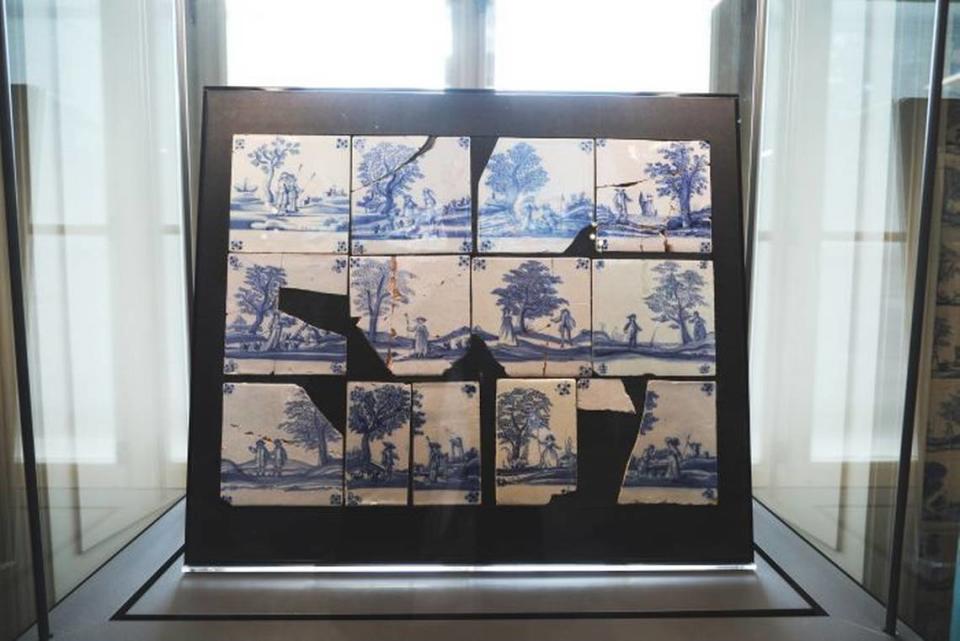Package from mystery sender arrives at Poland museum — with missing artifacts inside
At the Royal Łazienki Museum, a package arrived from Canada.
The sender was unknown, and the box was accompanied by a letter.
When the package was opened, the museum curators were shocked by what was inside.
One dozen preserved tiles — missing since World War II — were packed neatly in the box.

The Royal Łazienki Museum sits on the site of Ujazdów, an expansive estate turned private residence for the last king of Poland, according to the museum.
The property was purchased by Stanisław Herakliusz Lubomirski in 1674, and on a small island Lubomirski decided to build a small bathing pavilion, the museum said.
Inside the bathhouse, walls of Dutch ceramic tile were installed to protect the building walls from moisture and to establish a certain level of financial status, according to an April 30 news release from the Ministerstwo Nauki i Szkolnictwa Wyższego, the Ministry of Science and Higher Education in Poland.
The tiles were produced in the Netherlands sometime between 1690 and the 1700s, officials said, mimicking the French Versaille style started by the royal court.
When King Stanisław August, who ruled from 1764 to 1795 as the last king of independent Poland, later took over the property, he fell in love with the Baroque style of the baths and expanded the buildings into his private home, according to the release.
For centuries, the blue and white tiles decorated with trees and shepherds watched over the happenings in the home as time moved forward.
Then, disaster struck.

In 1944, as World War II raged on and Poland was under Nazi occupation, a fire broke out at what is now called the Palace on the Isle, and much of the property was damaged, according to the release.
The tiles likely survived the flames, museum officials said, but were distributed, stolen and lost to time. The tiles were reconstructed inside the property, but the originals were so special they rarely turned up in art auctions or on the antique market, according to officials.
Now, 12 of the original tiles arrived literally at their doorstep.
Museum officials said the recovered tiles are extremely valuable, not only to the museum but to the history of Poland.
It is unknown how the tiles arrived in Canada, who they belonged to or what prompted their mysterious return to the baths of Poland.
The tiles are now on display in the museum until Sept. 1 in the Bacchus Room in the Palace on the Isle, museum officials said.
Google Translate was used to translate the news releases from the Ministerstwo Nauki i Szkolnictwa Wyższego and the Royal Łazienki Museum.
Metal detectorist spots green object — and finds rare 400-year-old artifact. See it
Workers unearth steelworks at medieval castle in UK — and find someone’s ‘hidey-hole’
Ancient walls — that served as ‘Google Maps’ for the Mayans — discovered in Mexico
Metal detectorist stumbles on centuries-old artifact — once banned by tsar — in Poland
